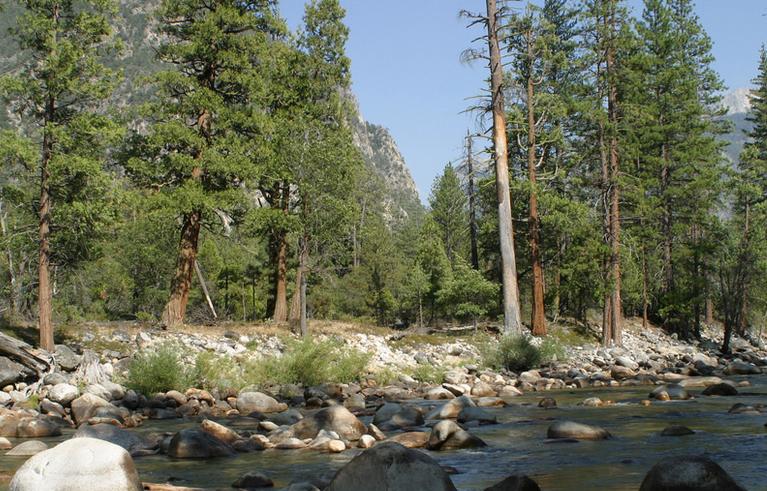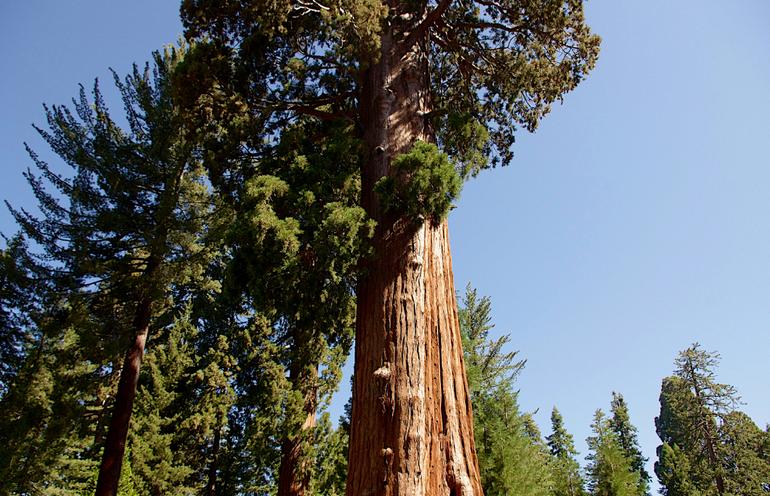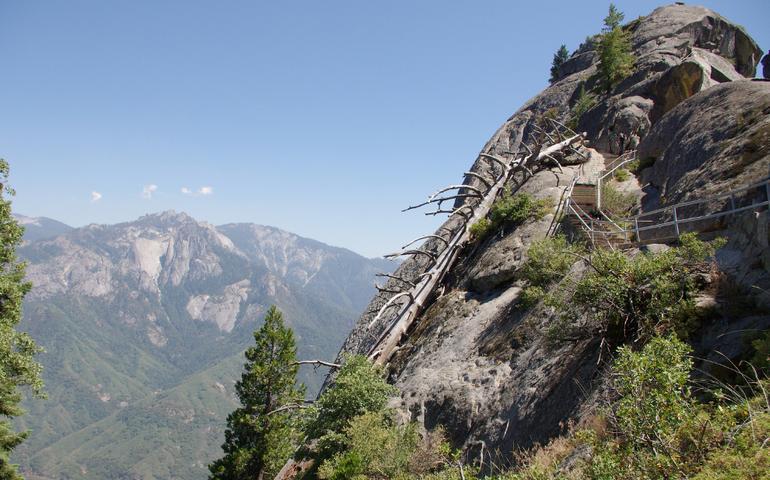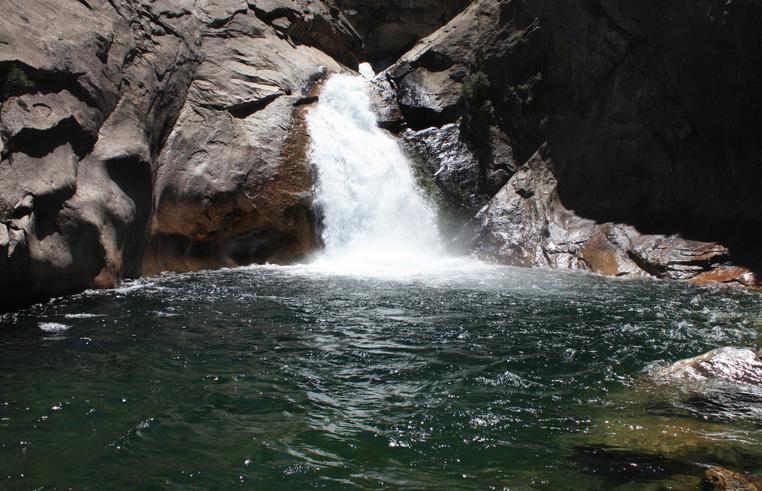
Sequoia-Kings Canyon Park’s point of interest. Things to do and see along the General’s Highway.
Tucked side by side in the Southern Sierra Nevada Mountains, east of the San Joaquin Valley. Both parks are connected by a single road that provides nearly 866,000 acres of outdoor adventure in the “Land of the Giants.”
Sequoia National Forest was established in 1890 in Tulare County, California. Kings Canyon National Park was established in 1940 –and is a little over 8 percent larger in terms of area and stretches across two counties in California.

Like Sequoia, Kings Canyon is located in Tulare County, but it also occupies space in Fresno County.
Sequoia National Park is famous for many reasons, but two of them immediately jump out at you.
First, this Park contains the highest point in the contiguous 48 United States. Mount Whitney stands at 14,505 feet above sea level. The other notable trademark of the Sequoia is its collection of giant trees.

The most noteworthy is a towering 274.9-foot ancient tree believed to be between 2,300 and 2,700 years old, known as General Sherman, which happens to be the most giant tree on Earth. This colossal topiary is located in the Giant Forest, home to five of the ten largest trees in the world.
While Sequoia Park contains one of the highest points in the United States, its neighbor has one of the deepest points in The Great Canyon. Oddly enough, the deepest portion of the canyon is not even within the Park’s borders.

The canyons of the Kings River are even more profound than the Grand Canyon, making them the deepest Canyons in North America. In some places, it is 8,000 feet from bottom to top. Also, like its neighbor, Kings Canyon is known for its collection of giant sequoia trees.
These are located in the Grant Grove area, which was once General Grant National Park. The most notable tree in this section is the General Grant Tree, the third-largest tree in the world at nearly 270 feet. Besides its barked-covered behemoths, Sequoia National Park has many attractions, including hiking, camping, fishing, and backpacking.
Hikers will enjoy the Park’s most popular trail –the Sherman Tree Trail, which is nearly a one-mile round-trip trail that takes you from the parking lot to the base of General Sherman.

Staying with the sequoia theme, there is also something known as the Tunnel Log. This tree fell across a park road in 1938 due to natural causes. The park crew eventually cut an eight-foot-tall, 17-foot wide tunnel through the trunk to make the road passable again.
Next is the Crescent Meadow, which stretches across the Great Western Divide to Mount Whitney. John Muir coined this area the “Gem of the Sierras.” The meadow lies at the end of a three-mile paved road that leaves the General’s Highway near the Giant Forest Museum.
The Sequoia-Kings Canyon Museum is a great place to stop and grab some maps and information while taking a picture or two in front of the Sentinel tree. Admission is free, and inside are a few display cases, a size comparison model of giant Sequoia trees, and a gift shop.

Finally, Moro Rock is a granite dome located at the center of the Park, at the head of Moro Creek, between the Giant Forest and the Crescent Meadow. There is a 400-step stairway that was built in the 1930s, cut into, and poured onto the rock so that visitors can hike to the top.
From there, adventurers are treated to a spectacular view of the vast majority of the Park from over 6,500 feet above sea level.
Back over in Kings Canyon, the Park consists of two sections. You have the General Grant Grove section, the largest remaining natural grove of giant sequoias in the world. It contains over 15,800 sequoia trees, around one foot in diameter at their bases.

The other section covers over 90 percent of the Park’s total area. It is located east of the General Grant Grove. This section also contains the place that the Park is named after, Kings Canyon. It is located in the South Fork Canyon and has a maximum depth of 8,200 feet, making it one of the deepest canyons in the United States.
The architect of that magnificent valley is the Kings River which flows down from the high mountains through the valley and the grand canyon. This river drops 13,291 feet along its course, the most remarkable vertical drop for any undammed river in the United States.

Famous landmark on the river in the eastern portion of the valley is Muir Rock and Roaring River Falls. In addition to the natural wonders, the Park also features several interesting buildings, including some remnants of earlier times. One example is Knapp’s Cabin on the shores of King’s River.
Getting To Sequoia-Kings Canyon

Two state highways provide roadways to Sequoia-Kings Canyon parks. These highways become the General’s Highway inside the parks’ boundaries and are often referred to as “the road between the parks.” Highway 180 enters Kings Canyon National Park from the northwest, and Highway 198 enters Sequoia National Park from the southwest.
It will take several days to explore Sequoia-Kings Canyon Parks fully. Nearby Visalia offers a wide selection of hotels and dining options and makes an excellent base for exploring the California Central Valley or Sequoia National Park and Kings Canyon National Park. We have only listed a few of the incredible natural wonders you will find in these two National Parks.
We made this trip a few weeks ago and it was so good. I highly recommend it. It was on my bucket list and now I can enjoy knowing this place personally. So beautiful in every way